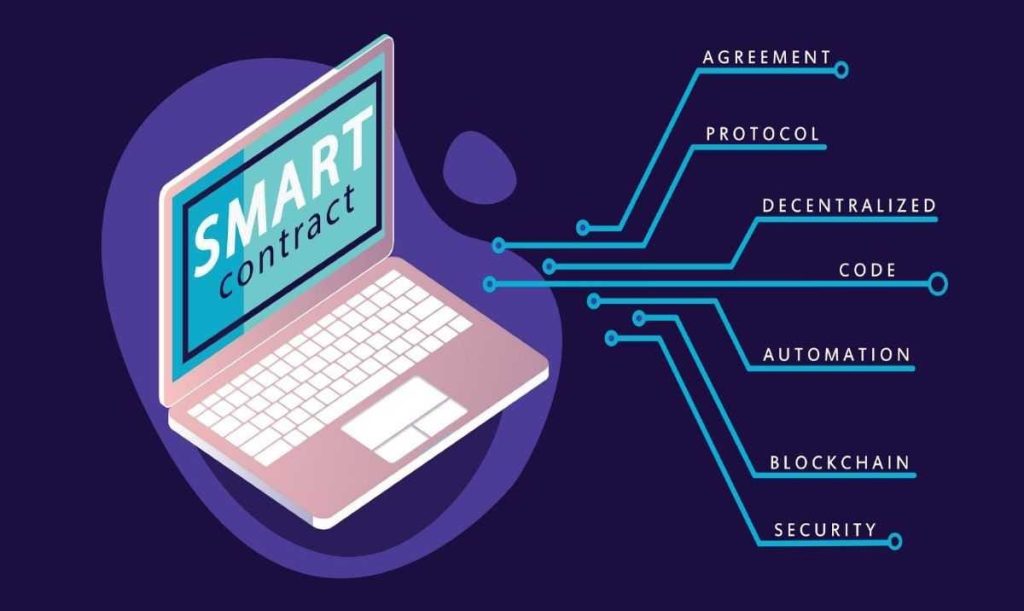Introduction
Smart contracts are the backbone of decentralized applications (dApps), governing everything from decentralized finance (DeFi) protocols to NFT marketplaces and DAOs. These contracts execute automatically on the blockchain, without the possibility of alteration once deployed. While this immutability offers trustlessness, it also introduces a critical risk—any bugs or vulnerabilities in the code are permanent and exploitable.
That’s where smart contract auditing comes in.
A smart contract audit is a systematic review of code to identify bugs, security vulnerabilities, logic flaws, and design inconsistencies before the contract goes live. When done properly, it is one of the most effective strategies for mitigating risk, building user trust, and ensuring the long-term safety of blockchain systems.
This article explores how smart contract audits work, what they typically include, and how they help reduce security risks in blockchain applications.
1. Why Are Smart Contract Audits So Important?
High Stakes, Immutable Code
Once a smart contract is deployed, it becomes a part of the blockchain. It cannot be modified or patched without potentially expensive and complex workarounds—often requiring complete contract redeployment.
Financial Risk
Most smart contracts handle real value, such as user deposits, NFTs, voting rights, or governance privileges. Even small bugs can lead to catastrophic losses.
Examples of Smart Contract Failures
- The DAO Hack (2016): Exploited a reentrancy bug; $60M was drained.
- Parity Wallet Bug (2017): A coding flaw froze over $280M worth of ETH.
- bZx and Harvest Finance Hacks: Flash loan exploits drained millions from DeFi protocols.
An audit dramatically lowers the likelihood of such events.
2. What Does a Smart Contract Audit Include?
A. Manual Code Review
Security engineers read the code line by line to:
- Identify logical errors or unexpected behavior
- Spot vulnerabilities (e.g., reentrancy, overflow/underflow)
- Check for compliance with Solidity best practices
B. Automated Static Analysis
Tools like MythX, Slither, or Foundry scan the codebase to detect:
- Known vulnerability patterns
- Unused variables
- Gas inefficiencies
- Dangerous external calls
C. Simulation & Unit Testing
Auditors simulate how the contract behaves under different conditions, including edge cases, using:
- Testnets
- Hardhat/Truffle testing frameworks
- Fuzz testing (generating random inputs to find failures)
D. Attack Vector Modeling
Auditors think like attackers:
- Can the contract be manipulated by flash loans?
- Can oracles be exploited?
- Is the business logic economically sound?
E. Review of Dependencies and Libraries
Third-party libraries (e.g., OpenZeppelin) are checked for:
- Version compatibility
- Known bugs
- Proper integration
3. Common Vulnerabilities Detected in Audits
- Reentrancy attacks
- Integer overflows/underflows
- Unchecked call return values
- Improper access controls
- Timestamp dependence
- Gas limit vulnerabilities
- Logic flaws in tokenomics or protocol flow
4. Types of Audits
1. Internal Audits
Performed by the in-house development team or company-affiliated security staff.
2. External Audits
Conducted by independent third-party firms (e.g., Trail of Bits, CertiK, OpenZeppelin, ConsenSys Diligence).
✅ External audits provide greater trust and objectivity.
5. Deliverables of a Smart Contract Audit
- Executive Summary: High-level overview of findings
- Detailed Vulnerability Report:
- Severity classification (High, Medium, Low, Informational)
- Technical description
- Recommendations for mitigation
- Code Quality Review: Best practices, optimization, gas usage
- Remediation Guidance: How to fix and improve the code
- Final Audit Report (after fixes are implemented): Often published publicly to build transparency
6. Best Practices for a Secure Smart Contract Audit Process
Before the Audit
- Freeze the codebase
- Write comprehensive tests (unit, integration)
- Document contract logic and intended behavior
- Create a threat model
During the Audit
- Provide auditors with full code access and architecture documentation
- Respond quickly to questions and clarifications
After the Audit
- Fix critical and high-severity issues before launch
- Consider a second audit round if major changes were made
- Publish the final audit report for community review

7. Limitations of Audits (and How to Address Them)
While audits greatly reduce risk, they are not foolproof.
Limitations
- Audits are a snapshot in time
- Human error in manual review
- Code changes post-audit can reintroduce vulnerabilities
- Over-reliance on audits can create false confidence
How to Improve Security Post-Audit
- Conduct bug bounty programs (e.g., Immunefi, HackenProof)
- Implement on-chain monitoring and alert systems
- Use formal verification for critical logic
- Adopt modular and upgradeable designs with governance guardrails
8. Case Studies of Effective Audits
Aave Protocol
- Multiple third-party audits
- Formal verification for core contracts
- Continual audits for new releases
- Bug bounty program with millions in rewards
Uniswap
- Uniswap V3 contracts underwent rigorous audits by Trail of Bits and ConsenSys
- Public testing and academic-level documentation
Conclusion
Smart contract audits are a critical line of defense in the world of blockchain security. They help uncover vulnerabilities before malicious actors can exploit them, saving projects from financial losses, reputational damage, and regulatory scrutiny.
However, audits are most effective when seen as part of a broader security lifecycle, including continuous testing, real-time monitoring, community transparency, and proactive incident response. In decentralized systems where code is law, ensuring that the code is secure is not optional—it’s essential.
















































